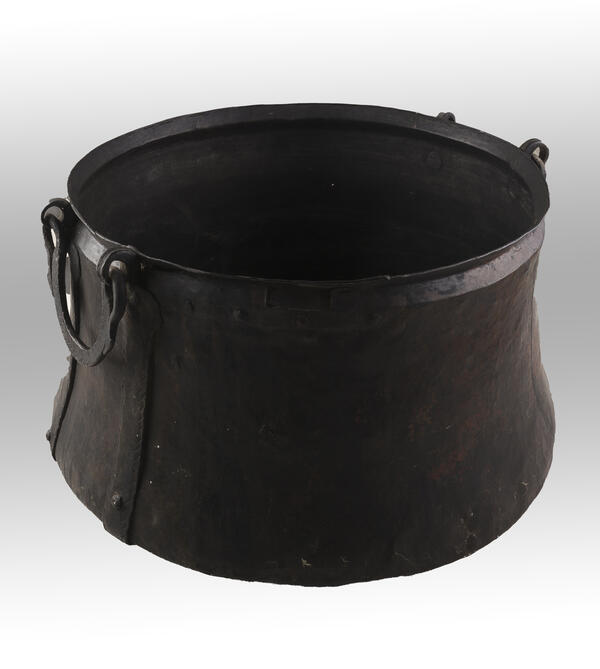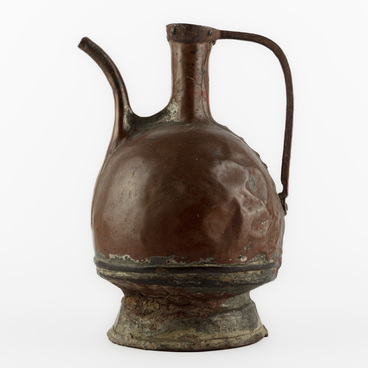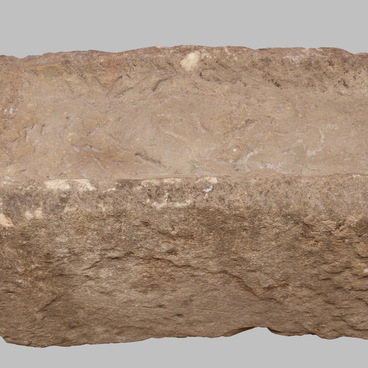Circassian cuisine is diverse and original, and meals remind a ritual or a sacred ceremony. Eating together had a deep meaning and was to be taken seriously. In ancient times, eating was associated with something sacred. Joint meals also had social significance. In the course of communication, the bonds of friendship were strengthened. The host paid attention to the guests, and they demonstrated their respect to the house owner. Food was believed to be a gift, and defiant refusal to share a meal was seen as rudeness and neglect. During the feast, more and more new dishes appeared on the table, and the hospitable hosts always treated travelers with delicious dishes from the most simple and everyday products. Saltwater and freshwater fish, game, livestock products (meat, mainly lamb, cheese, and milk), honey, pastries, fruits, berries and nuts were part of the traditional Circassian cuisine, which was simple, but simultaneously varied.
Hospitable hosts would certainly need a cauldron. It was the main kitchen utensil. A cauldron was hung over the fireplace on a special chain. Cauldrons were used for cooking both holiday and everyday recipes. They came in various sizes. People believed that the food cooked in a cauldron had a special taste and aroma. Until now, many cooks in Adygea prepare holiday and everyday dishes in cauldrons.
The permanent exhibition includes a cauldron for cooking on an open fire, dated to the late 19th — early 20th century. It was made from sheet copper. The cauldron has two curved wrought iron handles. The handles are attached to the loops on the iron plates, which are riveted to the cauldron. These iron plates, which enhance the strength of the object, are decorated with parallel notches.
A cauldron was a very expensive kitchen utensil due to the large amount of material used to make it. Therefore, it was treated very carefully, passed down from generation to generation and often repaired. The cauldron presented in the museum exhibition has no patches, which may mean that it was either used only for a brief period, or it was treated with care.
Hospitable hosts would certainly need a cauldron. It was the main kitchen utensil. A cauldron was hung over the fireplace on a special chain. Cauldrons were used for cooking both holiday and everyday recipes. They came in various sizes. People believed that the food cooked in a cauldron had a special taste and aroma. Until now, many cooks in Adygea prepare holiday and everyday dishes in cauldrons.
The permanent exhibition includes a cauldron for cooking on an open fire, dated to the late 19th — early 20th century. It was made from sheet copper. The cauldron has two curved wrought iron handles. The handles are attached to the loops on the iron plates, which are riveted to the cauldron. These iron plates, which enhance the strength of the object, are decorated with parallel notches.
A cauldron was a very expensive kitchen utensil due to the large amount of material used to make it. Therefore, it was treated very carefully, passed down from generation to generation and often repaired. The cauldron presented in the museum exhibition has no patches, which may mean that it was either used only for a brief period, or it was treated with care.




